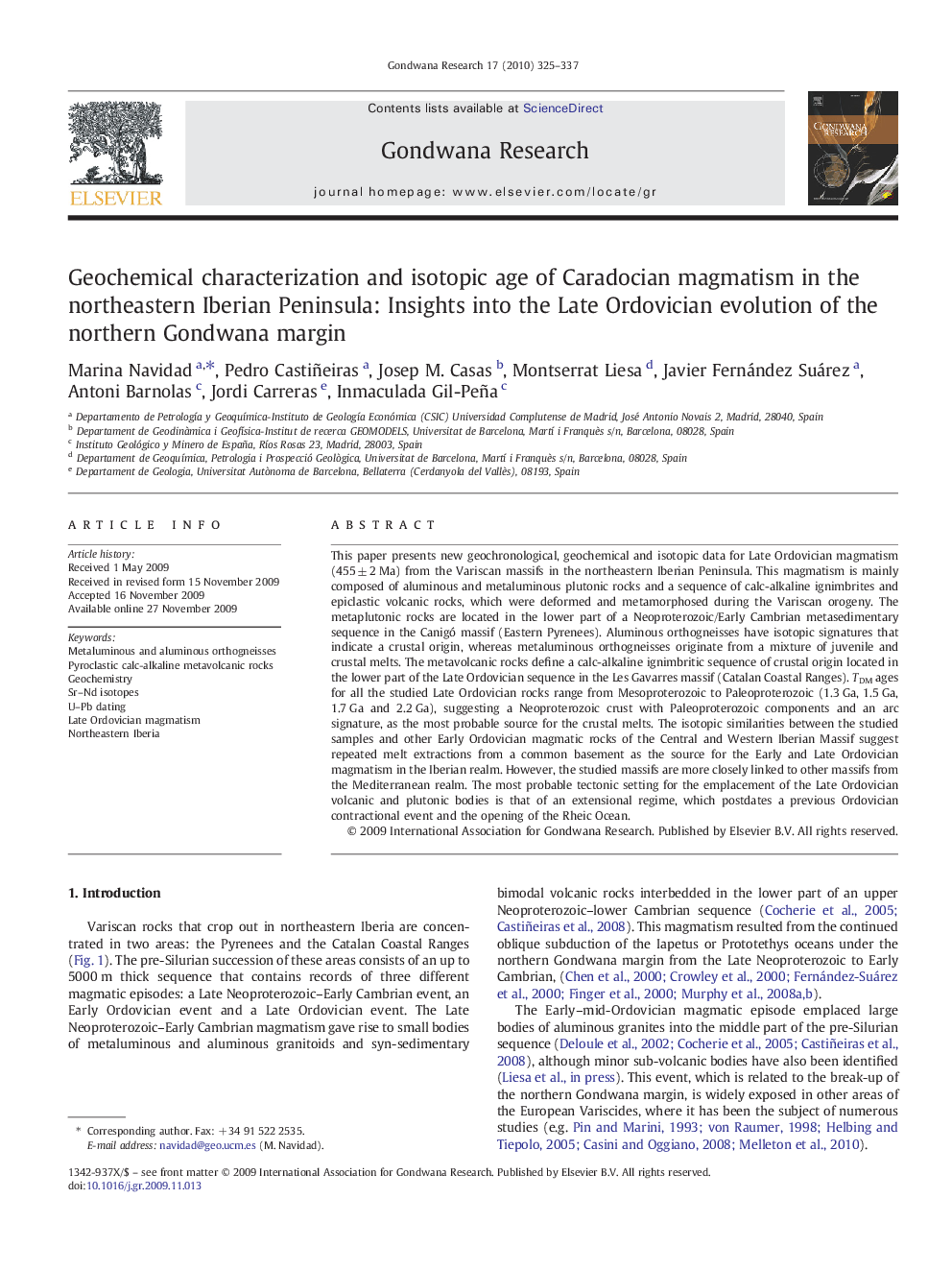| کد مقاله | کد نشریه | سال انتشار | مقاله انگلیسی | نسخه تمام متن |
|---|---|---|---|---|
| 4727235 | 1640149 | 2010 | 13 صفحه PDF | دانلود رایگان |
عنوان انگلیسی مقاله ISI
Geochemical characterization and isotopic age of Caradocian magmatism in the northeastern Iberian Peninsula: Insights into the Late Ordovician evolution of the northern Gondwana margin
دانلود مقاله + سفارش ترجمه
دانلود مقاله ISI انگلیسی
رایگان برای ایرانیان
موضوعات مرتبط
مهندسی و علوم پایه
علوم زمین و سیارات
زمین شناسی
پیش نمایش صفحه اول مقاله

چکیده انگلیسی
This paper presents new geochronological, geochemical and isotopic data for Late Ordovician magmatism (455 ± 2 Ma) from the Variscan massifs in the northeastern Iberian Peninsula. This magmatism is mainly composed of aluminous and metaluminous plutonic rocks and a sequence of calc-alkaline ignimbrites and epiclastic volcanic rocks, which were deformed and metamorphosed during the Variscan orogeny. The metaplutonic rocks are located in the lower part of a Neoproterozoic/Early Cambrian metasedimentary sequence in the Canigó massif (Eastern Pyrenees). Aluminous orthogneisses have isotopic signatures that indicate a crustal origin, whereas metaluminous orthogneisses originate from a mixture of juvenile and crustal melts. The metavolcanic rocks define a calc-alkaline ignimbritic sequence of crustal origin located in the lower part of the Late Ordovician sequence in the Les Gavarres massif (Catalan Coastal Ranges). TDM ages for all the studied Late Ordovician rocks range from Mesoproterozoic to Paleoproterozoic (1.3 Ga, 1.5 Ga, 1.7 Ga and 2.2 Ga), suggesting a Neoproterozoic crust with Paleoproterozoic components and an arc signature, as the most probable source for the crustal melts. The isotopic similarities between the studied samples and other Early Ordovician magmatic rocks of the Central and Western Iberian Massif suggest repeated melt extractions from a common basement as the source for the Early and Late Ordovician magmatism in the Iberian realm. However, the studied massifs are more closely linked to other massifs from the Mediterranean realm. The most probable tectonic setting for the emplacement of the Late Ordovician volcanic and plutonic bodies is that of an extensional regime, which postdates a previous Ordovician contractional event and the opening of the Rheic Ocean.
ناشر
Database: Elsevier - ScienceDirect (ساینس دایرکت)
Journal: Gondwana Research - Volume 17, Issues 2â3, March 2010, Pages 325-337
Journal: Gondwana Research - Volume 17, Issues 2â3, March 2010, Pages 325-337
نویسندگان
Marina Navidad, Pedro Castiñeiras, Josep M. Casas, Montserrat Liesa, Javier Fernández Suárez, Antoni Barnolas, Jordi Carreras, Inmaculada Gil-Peña,